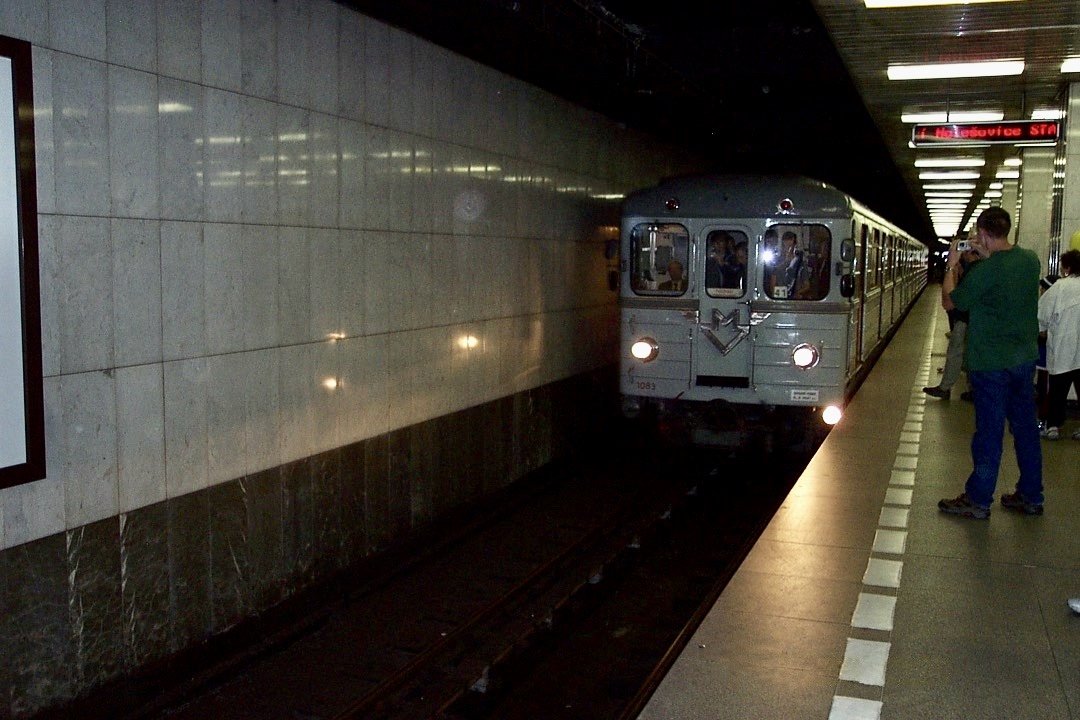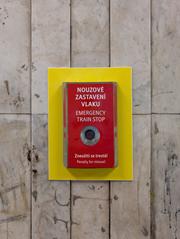
Kačerov Prague Historical Site: Visiting Hours, Tickets, and Tourist Guide
Date: 14/06/2025
Introduction to Kačerov Historical Site in Prague
Nestled in Prague’s vibrant urban landscape, Kačerov stands out as a destination for travelers seeking an authentic view of the city’s southern gateway and evolving suburban life. Located in Prague 4, between Michle and Krč, Kačerov is best known for its pivotal metro station on Line C, which has served as a crucial transit hub since its opening in 1974. This guide explores Kačerov’s transformation from a semi-rural outskirt to a thriving urban neighborhood, shaped by post-war development, metro expansion, and modern urban planning focused on sustainability and community (newgeography.com, Wikipedia).
Kačerov offers a unique cultural experience rooted in daily Czech life. Unlike Prague’s main tourist hotspots, this area features tranquil streets, functionalist architecture, local markets, and access to green spaces like Krčský les forest, inviting visitors to engage with the city’s residential heart (Magazine of Travel, View from Prague).
A major advantage of staying in or visiting Kačerov is its easy access to Vyšehrad, one of Prague’s historical gems. The ancient fortress, just a short walk or metro ride away, features panoramic views, the Basilica of St. Peter and St. Paul, and the culturally significant Vyšehrad Cemetery. This blend of urban vitality, history, and culture makes Kačerov a convenient starting point for exploring Prague’s multifaceted identity (Prague Transport Guide, Earth Trekkers, Praguego.com).
This comprehensive guide provides everything you need to know—from visiting hours and ticketing to transportation, dining, and etiquette—to ensure a memorable and informed experience in Kačerov and its surroundings. For real-time transport updates, consult the Prague public transport website or use mobile apps like Audiala.
Table of Contents
- Introduction
- Historical Evolution of Kačerov
- Practical Visitor Information
- Everyday Life in Kačerov
- Cultural Fabric and Community Spirit
- Attractions in and Around Kačerov
- Dining and Nightlife
- Etiquette and Visitor Tips
- Visiting Vyšehrad: Fortress, Hours, Tickets, and Travel
- Summary and Recommendations
- References
Historical Evolution of Kačerov
Early Development and Urban Context
Kačerov’s origins trace back to Prague’s outer districts, which shifted from semi-rural landscapes to bustling neighborhoods during the 20th century. Post-World War II, Prague’s suburbs grew rapidly: the population in these areas more than doubled between 1980 and 2017, reflecting a larger trend of urban expansion (newgeography.com). Kačerov’s growth mirrors this demographic transformation, evolving from peripheral farmland into a well-integrated part of the city.
Metro Era and Urban Growth
The opening of Kačerov Metro Station on May 9, 1974, marked a turning point. Serving as the original southern terminus of Metro Line C, it connected central Prague (then Sokolovská, now Florenc) with the southern suburbs (Wikipedia). The station operates daily from about 5:00 AM to midnight, offering reliable and frequent access. Metro expansion spurred residential and commercial development, with housing estates and office complexes soon built nearby. The 1980 extension of Line C to Háje further cemented Kačerov’s role as a crucial transit node.
Urban Planning and Renewal
Kačerov’s evolution aligns with Prague’s comprehensive urban planning, led by the city’s Institute of Planning and Development (Eurisy). Between 2005 and 2010, around 62,000 new homes were built in Prague’s outer districts, including Prague 4, to foster sustainable growth. The city’s strategy emphasizes green spaces, infrastructure, and community amenities, with a focus on sustainability and innovation (FutureHubs). Kačerov benefits from these efforts, boasting well-connected transport and continuous public space enhancements.
Infrastructure and Connectivity
Kačerov is serviced not only by the metro but also by several bus lines connecting Prague’s southern neighborhoods. Its proximity to the D1 highway and the Prague Ring Road (Pražský okruh) increases its accessibility (Expats.cz). Ongoing construction, including tunnel and bridge renovations, may impact travel times until 2027.
Residential and Social Life
The area features a mix of mid-20th-century apartment buildings, newer housing, and commercial facilities. Local amenities—supermarkets, cafes, small shops—cater to both residents and commuters. The neighborhood’s vibrancy is captured in local photography and community stories, reflecting daily life beyond Prague’s tourist districts (Culture Smuggling). Urban renewal projects continue to improve water quality, energy efficiency, and community engagement (FutureHubs).
Practical Visitor Information
- Metro Hours & Tickets: Kačerov Metro Station operates from approx. 5:00 AM to midnight. Tickets are available at station kiosks or through the Prague public transport app. Single tickets start from 30 CZK, with options for 30-minute, 90-minute, or multi-day passes.
- Transport Connections: Metro Line C and multiple bus lines serve Kačerov, enabling direct routes to the city center and southern suburbs.
- Accessibility: The station is equipped with elevators and ramps for passengers with reduced mobility.
- Nearby Attractions: Kačerov is a practical base for exploring nearby parks, local eateries, and for easy metro access to the city’s main historic sites.
Everyday Life in Kačerov
Unlike Prague’s tourist-laden center, Kačerov is defined by calm streets, functionalist and post-war architecture, and a strong community spirit. Residents frequent local bakeries, cafes, markets, and green spaces. The neighborhood is family-friendly, with playgrounds and regular community events such as farmers’ markets and seasonal festivals.
Cultural Fabric and Community Spirit
Kačerov’s community is a blend of longtime residents, young professionals, and families. The area is shaped by local schools, community centers, and independent businesses. While major museums are found in adjacent districts, Kačerov residents enjoy proximity to cultural venues in Nusle and Pankrác (Local Life Prague). Czech traditions are alive, especially during holidays and folk events. Family-run restaurants deliver authentic Czech dishes, offering a taste of everyday life (Magazine of Travel).
Attractions in and Around Kačerov
Metro Station and Transit Legacy
Kačerov Metro Station, opened in 1974, stands as an emblem of Prague’s post-war modernization. Its functionalist design is representative of 1970s Czechoslovakia and marks the area’s transformation into a modern urban hub (Prague Transport Guide).
Parks, Recreation, and Markets
Krčský les (Krč Forest), one of Prague’s largest urban parks, is nearby and offers walking/cycling trails, picnic spots, and playgrounds (View from Prague). Kačerov hosts regular farmers’ markets featuring local produce and crafts (Magazine of Travel). For extensive shopping, the Arkády Pankrác center is easily accessible (Prague.org).
Architecture and Proximity to Major Sites
Kačerov’s buildings reflect a mix of functionalist, socialist-era, and newer styles, especially along Michelská Street (Then and Now Prague). The area is conveniently located for quick metro trips to:
- Vyšehrad: Historic fortress with panoramic city views and the Basilica of St. Peter and St. Paul (Earth Trekkers).
- Prague Castle: The city’s iconic ancient castle complex (The Crazy Tourist).
- Old Town Square: Heart of historic Prague, with the Astronomical Clock and Gothic churches (Timeout Prague).
Dining and Nightlife
Kačerov’s dining scene is authentic and relaxed. Pubs serve classic Czech beers and hearty dishes, while bakeries and cafes offer local pastries (Magazine of Travel). For a livelier nightlife, visit nearby Vinohrady or Nusle, known for bars and music venues (The Travel Tinker).
Etiquette and Visitor Tips
- Language: Czech is primary, but English is commonly spoken in transport and hospitality.
- Tickets: Buy and validate tickets for all public transport (Prague Tourist Information).
- Safety: Kačerov is generally safe; standard precautions suffice.
- Customs: Greet with “Dobrý den” and tip 10% at restaurants.
- Best Time: Spring and autumn are pleasant with fewer crowds (Lonely Planet).
Visiting Vyšehrad: Fortress, Hours, Tickets, and Travel
History and Significance
Vyšehrad, perched on a hill above the Vltava River, is steeped in legend and history, dating to the 10th century. Once the seat of Czech princes, the fortress encompasses the Basilica of St. Peter and St. Paul and Vyšehrad Cemetery, final resting place of Czech luminaries.
Visiting Hours and Tickets
- Park and Walls: Open year-round, free entry.
- Basilica & Cemetery: Usually open 9:00 AM–5:00 PM; extended summer hours. The Basilica is free, but tours/exhibits may charge around 100 CZK.
- Casemates: Open April–October, 10:00 AM–6:00 PM; tickets approx. 150 CZK.
Confirm seasonal changes on the official Vyšehrad website.
Getting There from Kačerov
- Metro: Take Line C from Kačerov to Vyšehrad station (7 minutes). The fortress is a short walk from the station.
- Tram: Lines 3, 7, 17, and 18 stop nearby.
- Taxi/Ride-share: Journey from Kačerov or city center costs €8–15.
Accessibility and Practical Tips
- Most of Vyšehrad is wheelchair and stroller accessible, though some cobblestone areas require caution.
- Facilities include cafés and restrooms near the entrance.
- Unified tickets for Prague’s public transport are valid on metro, tram, and bus.
Nearby Attractions
- Vyšehrad Cemetery: Resting place of Dvořák and Mucha.
- Vltava River Promenade: Ideal for scenic walks.
- Petrin Hill: Accessible by metro, offers gardens and city views.
FAQ: Kačerov & Vyšehrad
Q: What are Kačerov metro station hours?
A: 5:00 AM–midnight daily.
Q: Are tickets required for Kačerov?
A: No, but public transport tickets are required to use metro and buses.
Q: Is Kačerov accessible?
A: Yes, with elevators and ramps.
Q: How do I get from Kačerov to Vyšehrad?
A: Take Metro Line C to Vyšehrad station; it’s a short walk from there.
Q: Are Vyšehrad’s park and fortress walls free?
A: Yes; specific attractions may charge entry.
Q: Can I buy tickets online for Vyšehrad’s paid attractions?
A: Yes, via the official Vyšehrad website.
Summary and Visitor Recommendations for Kačerov
Kačerov represents a distinctive Prague neighborhood, blending historical evolution, modern urban planning, and authentic local culture. Its transformation from outskirts to a connected metropolitan hub mirrors the city’s broader narrative of growth and sustainability (Eurisy, FutureHubs). The metro station anchors efficient access to both central Prague and iconic sites like Vyšehrad (Prague Transport Guide, The Crazy Tourist).
Visitors are encouraged to explore Kačerov’s parks, markets, and restaurants for a genuine local experience. Whether walking in Krč Forest, enjoying Czech cuisine, or visiting Vyšehrad Castle, Kačerov offers a welcoming gateway to Prague’s vibrant southern districts.
For optimal planning, consult official transport resources (Prague public transport website) and consider downloading the Audiala app for real-time navigation and local tips.
References and Further Reading
- The Evolving Urban Form: Prague (newgeography.com)
- Kačerov (Prague Metro) (Wikipedia)
- Prague Monitoring Urban Sprawl Using Satellite Information (Eurisy)
- Prague, Czech Republic: The Story of Urban Renewal and Community Transformation (FutureHubs)
- What Do Locals Do in Prague? Insider’s Perspective (Magazine of Travel)
- Visiting Prague for the First Time (View from Prague)
- Best Things to Do in Prague (Earth Trekkers)
- Top 25 Things to Do in Prague (The Crazy Tourist)
- Prague Public Transport Website
- Culture Smuggling - Kačerov
- Local Life Prague
- Prague.org
- Then and Now Prague
- Timeout Prague
- The Travel Tinker
Visuals:
- Map of Kačerov’s transport connections in Prague
- Historic and modern photos of Kačerov
- Images of Kačerov Metro Station and Vyšehrad
Internal Links:
Plan your visit with the Audiala app, explore more of Prague’s neighborhoods, and follow us for the latest travel tips and local insights!























































































































































































